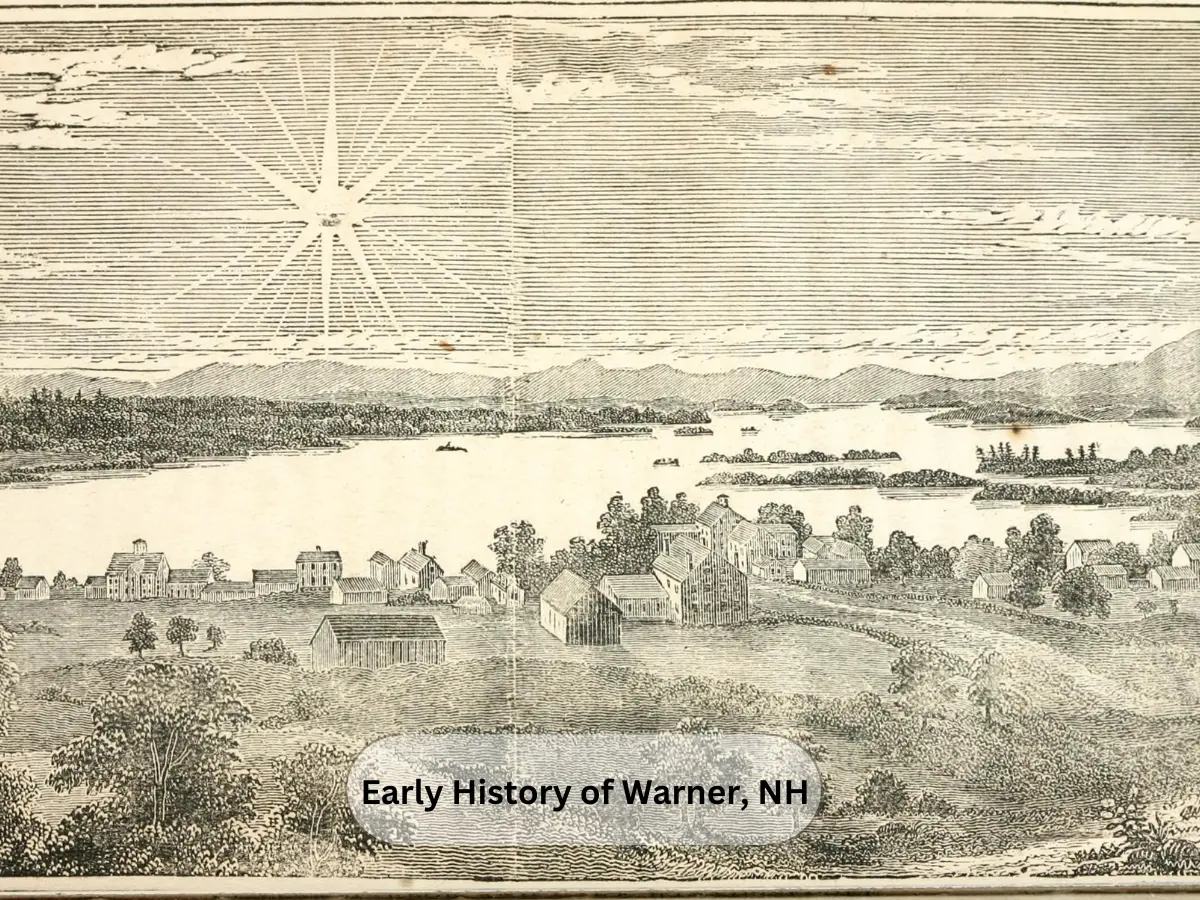Stewart peak, in Warner, NH, is both a natural marvel and an ancient landmark. From local American origins to fashionable-day significance, this article explores the records of Stewart top, Warner NH. The peak is an indispensable part of Warner’s cultural and historic fabric.
Location and Geographic Overview
Where is Stewart Peak?
Stewart top is located within the scenic metropolis of Warner, New Hampshire, a part of Merrimack County in important New Hampshire. Warner is a traditional New England metropolis, surrounded by mountains, forests, and rivers.
Stewart top rises prominently on this picturesque landscape, providing splendid perspectives. Its proximity to the Mink Hills and the Mount Kearsarge nation wooded area showcases its herbal significance.
With its elevation, Stewart height gives spectacular vistas of the Warner River Valley. It has emerged as a top spot for hikers and nature lovers. However, the peak is more than just a lovely panorama.
It additionally includes the weight of historic activities that fashioned the history of Stewart peak, Warner NH and the encircling network.
Stewart Peak and Its Surrounding Landscape
The panorama round Stewart peak is wealthy with forests, rivers, and valleys. This made it appealing to early settlers. The close by Mount Kearsarge country woodland Park helps defend this place, preserving the natural environment. The peak is a part of a habitat that supports deer, moose, and many bird species.
The combination of elevation and place made Stewart top treasured historically. historic trails exceeded via this region, probably utilized by both native people and early settlers. Nowadays, the peak is a factor of interest for geographers and historians.
Early History of Warner, NH

Native American Inhabitants in Warner
Long before eu settlers arrived, the Abenaki human beings lived inside the Warner place. The fertile land and rich wildlife made it a perfect vicinity for looking and fishing. Stewart’s height might also have been an enormous location for the Abenaki, probably as a lookout or a spiritual web site.
native American trails probably surpassed around Stewart top, connecting numerous tribal territories. The Abenaki had a deep reference to the land, the use of it for sustenance without inflicting dramatic changes to the panorama.
Colonial Settlement and Land Grants
In the early 18th century, the land around Warner, consisting of Stewart peak, was granted to settlers from Massachusetts. Warner, at first referred to as number one, saw its first colonial settlers in 1735. The location around Stewart height turned into cleared for farming, and the height itself became an acquainted landmark for those early pioneers.
The settlers made use of the fertile valleys for farming, even as the rivers powered early mills. The peak stood tall as a natural reference factor, assisting settlers navigate the rugged terrain. Its presence became a part of Warner’s developing identification.
Naming of Stewart Peak
Who Was Stewart?
Stewart peak receives its call from the Stewart own family, early settlers in Warner. While the specific Stewart the height became named after isn’t absolutely documented, the family played a critical position in the region’s development.
The Stewart call has become tied to the town’s agricultural and political history.
The Stewart family’s impact on Warner became lengthy-lasting. Their name, attached to the height, keeps to represent their contributions to the vicinity’s growth.
Stewart Family Legacy in Warner
Past agriculture, the Stewart circle of relatives stimulated Warner’s civic development. They helped build the early infrastructure that turned Warner into a hub of alternate and industry. Stewart peak, sporting their name, stands as a testimony to their legacy and is a crucial part of the records of Stewart top, Warner NH.
Many historical money owed by Warner spotlight the function of the Stewart own family. Their efforts formed the city, and Stewart remains a monument to their lasting impact at the network.
Stewart Peak in the 18th Century
The Role of Stewart Peak During the Revolutionary War
During the modern conflict, Warner was part of the colonial attempt to face up to British rule. Stewart peak’s top made it a useful lookout for local militias looking for enemy actions. Its strategic value turned into clean, presenting perspectives of key routes.
Warner citizens had been active in helping the combat for independence. Many nearby guys joined militias, and Stewart peak served as a natural guide for the ones transferring via the region throughout this turbulent time.
Agriculture and Early Industry Near Stewart Peak
As the 18th century improved, Warner evolved into an agricultural hub. Farms cropped up around Stewart top, the use of the fertile land and the river for irrigation. The height itself remained untouched however it played a role within the community’s economy.
Warner’s early industries had been small-scale but vital. Water-powered mills produced goods for local intake. The land around Stewart height became an essential aid for timber, used to construct houses and barns for the growing community.
19th Century Expansion
The Growth of Warner, NH in the 1800s
The nineteenth century noticed a fast boom in Warner, NH. With the expansion of roads and railways, Stewart peak became more visible and accessible. Warner’s population grew, and the metropolis became more connected to the kingdom economy.
The Warner Railroad, built within the mid-1800s, allowed for greater trade. Stewart peak stood as a familiar landmark for vacationers. Its function as part of Warner’s identification persisted to solidify in the course of this era of financial growth.
Logging and Land Use Around Stewart Peak
Logging became a prime industry round Stewart peak within the nineteenth century. wood become in excessive demand, and logging groups cleared lots of the encircling forests. although the peak itself turned into spared from heavy deforestation, its environment noticed enormous modifications.
this modification affected the environment. while logging fueled the neighborhood economic system, it also brought about soil erosion and changes in flora and fauna habitats. Stewart height remained a natural stronghold amidst the altered landscape, a reminder of the region’s earlier kingdom.
Stewart Peak in the Civil War Era
Warner’s Contribution to the Civil War
Warner, like many New England towns, dispatched lots of its men to fight inside the Civil war. local households sacrificed greatly, with many soldiers in no way returning home. Stewart’s height, though remote from the battlefields, remained part of the community’s day by day lifestyles.
The peak stood as a familiar sight for households expecting news of the war. Its presence has become intertwined with the reminiscence of Warner’s contribution to the Union cause. After the war, it has become an image of resilience and remembrance for the town.
Soldier’s Memorials and Connections to Stewart Peak
After the Civil conflict, Warner constructed numerous memorials honoring its squaddies. Some of these are positioned close to Stewart height, linking the landmark to the town’s history of sacrifice. The peak’s enduring presence adds a solemnity to these memorials, reinforcing the network’s connection to its past.
Stewart peak became an image no longer just of natural beauty, however also of the city’s enduring spirit. Its connection to these warfare memorials strengthens its position in Warner’s cultural reminiscence.
20th Century Developments
Warner’s Changing Economy and Stewart Peak
Through the 20th century, Warner’s financial system had shifted from agriculture and industry to tourism and conservation. Stewart top, once part of a rural economic system, became a key appeal for outdoor exercise. Hikers and nature fans flocked to its trails.
The decline of conventional industries made manners for a brand new recognition on defending the herbal surroundings. Stewart peak, with its scenic perspectives and wealthy biodiversity, became a symbol of this new era of environmental attention.
The Establishment of State and Local Parks
In the 20th century, conservation efforts gained momentum. Stewart peak, located near Mount Kearsarge state wooded area, benefited from those efforts. nearby and country parks have been set up to shield the herbal landscape around the height.
Those parks ensured that the forests and flora and fauna close to Stewart height could stay preserved. hiking trails and recreational facilities were evolved, similarly boosting the peak’s reputation as a vacation spot for outdoor enthusiasts.
Modern-Day Stewart Peak

Tourism and Outdoor Recreation in Warner, NH
Stewart peak is now a pinnacle vacation spot for hikers and travelers in Warner. Its trails offer extraordinary perspectives, and it draws site visitors from close to and some distance. the height’s elevation allows for panoramic views of the valleys and forests beneath.
Tourism has turn out to be a key part of Warner’s economic system. Stewart peak plays an critical function in drawing traffic to the place. The nearby Mount Kearsarge state wooded area and nicely-maintained trails beautify its appeal as a premiere outdoor vacation spot.
Conservation and Environmental Stewardship
In recent years, local corporations have labored tough to shield the natural environment round Stewart peak. Conservation efforts consist of reforestation and flora and fauna protection, making sure the height’s environment remains healthful.
these efforts mirror Warner’s willpower to maintaining its herbal historical past. Stewart top, with its unspoiled splendor, stands as a testament to the town’s commitment to environmental stewardship.
Legends and Folklore of Stewart Peak
Folktales and Stories
Like many historical landmarks, Stewart height has inspired its percentage of legends. local testimonies inform of strange lights visible at night and mysterious sounds echoing through the valleys. these memories upload to the peak’s appeal.
some say the peak become a assembly vicinity for local tribes or that it holds hidden treasures. while those tales are probable myths, they make a contribution to the rich folklore surrounding Stewart peak.
Historical Myths vs. Reality
Even as there are numerous legends approximately Stewart height, the authentic history is rooted within the lives of Warner’s residents. the peak played a role of their daily lives, serving as a natural marker and aid. Its real cost lies in its connection to the network’s boom and improvement.
Stewart height’s history is a reminder of the power and resilience of Warner’s humans. Its legacy keeps to influence the town’s subculture and identity.
Stewart Peak’s Role in Warner’s Cultural Heritage
Community Events and Historical Celebrations
Stewart top has featured prominently in lots of community occasions and celebrations. Warner’s annual Fall Foliage competition regularly includes activities that highlight the metropolis’s herbal splendor, with Stewart peak as a focal point.
The height’s presence enhances the town’s cultural celebrations. Its connection to Warner’s past makes it an imperative a part of neighborhood storytelling and historic displays.
Historical Societies and Preservation Efforts
neighborhood historic societies have worked to hold the records of Stewart peak. They’ve documented its position in Warner’s development and promoted efforts to shield its natural panorama. Those agencies have helped make sure that the memories of Stewart height are exceeded down via generations.
Their paintings reflect Warner’s willpower to preserve each its history and its environment. Stewart peak’s legacy is safeguarded via those ongoing efforts.
Conclusion
Stewart peak as a historic and Cultural Landmark
Records of Stewart top, Warner, NH: Stewart top isn’t always only a herbal feature of Warner; it clearly symbolizes the metropolis’s wealthy records. From local American trails to colonial settlements, the height has witnessed centuries of trade. Nowadays, it remains a key part of Warner’s identity.
As Warner continues to grow, Stewart height stands as a reminder of the city’s past. Its scenic beauty and historic importance make it a valuable landmark for citizens and site visitors alike.

